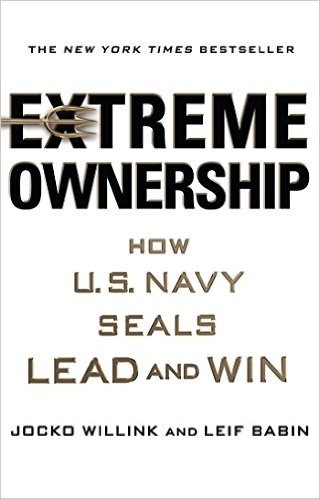|
Just finished the first book on my Kobo - Extreme Ownership by Jocko Willink and Leif Babin.
A straight forward no nonsense leadership book backfilled with intense combat tales of Navy Seals in Iraq. It was really interesting to see how they transformed their war stories into leadership training. Nice to see some practical approaches for the average person who reads military books! Here's some key take aways: - Be a humble leader. Take all the advice you can get. - Own leadership. Admit to your mistakes right away and have an action plan to fix them. - Discipline = Freedom. The more you discipline your lifestyle, the more freedom you're granted. Seems a bit redundant, but the theory is that if you're disciplined enough to wake up in the morning and workout, the more time you will have during the day. The more disciplined your diet, the healthier you will be (and the less damage you will do if you cheat). - Lead yourself out of a job. Enable people to lead themselves. Have their back and offer a high level of autonomy. Teams should be able to survive on their own in times of distress (like combat). - Lead up and down the chain of command. The challenge with leadership is making often unwelcome orders doable and committable. Don't sugar coat things. Just explain the WHY behind it. - Lead from the front. The best form of leadership is getting dirty with the team. Don't get too caught up in the details (they use leading a patrol from the front or back) but stay on the same level. Lead from the middle of the patrol so that you're keenly aware of whats going on up ahead and behind. - Know your role in the whole pie. Understand where you fit into an organizations strategic objectives and adjust your leadership accordingly.
By Patrick Van Horne & Jason Riley This book is a summary of a course conducted by the US military to train marines for modern urban combat. The goal is to have soldiers recognize events BEFORE they happen rather than wait and react to events. The example used in the book is an IED. If you imagine an IED explosion on a timeline, you have all the events leading up to the blast, then the blast and all the reactions that take place afterwards. If you consider the blast a bang, then we need to live ‘Left of Bang’. Recognizing the signs and symptoms of violence is possible with the appropriate knowledge. - Always establish a baseline. What does normal look like? What should people be doing? - Look for anomalies. Things that don’t seem to fit the baseline. - When you identify an anomaly, you should identify at least THREE different domains before you act. - Domains are Kinesics, Biometiric cues, proxemics, Geographic, Iconography, Atmospherics - Living left of bang takes practice, lots of it. Experts usually develop +10 years of practice. - Visit public spaces to observe people. Take note of the their body language below the neck - Be prepared to act when you observe an anomaly. Remember nature wants you to run, fight or freeze. -Running is best! - When required to fight, attack with extreme violence. - Condition Yellow! Be on semi alert at all times. Note where exits are and possible lines of attack. - Condition Red is active engagement in a situation (something is happening!) - Condition Black is over reaction. Your stress level and central nervous system are extreme and your ability to properly react is in jepordy. - Not your levels of situational awareness. |
Time to reinvent yourself!Jason WoodScience teacher, storyteller and workout freak. Inspiring kids to innovate. Be humble. Be brave. Get after it!
|








 RSS Feed
RSS Feed